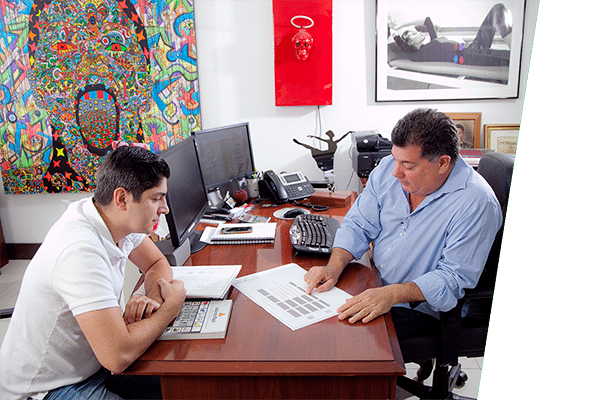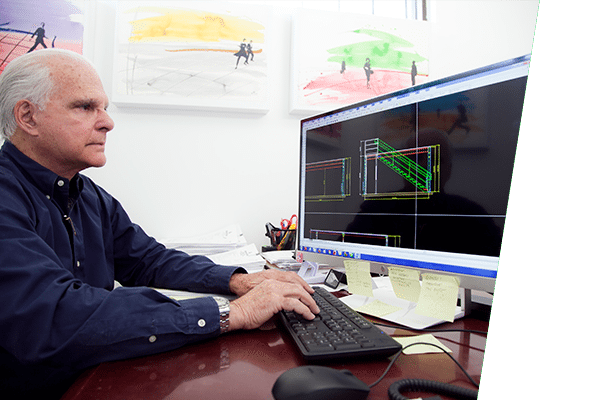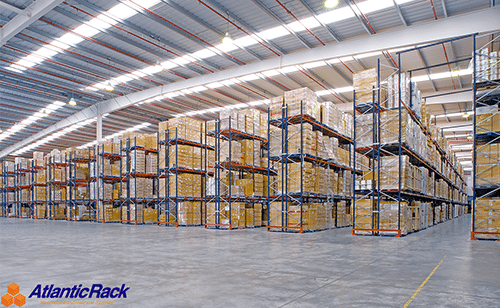Online orders and operations are active. Sign-up to be notified when this product is rack protection! Account email will be used for sign up. IPF certified for 2019 competition use, but also uniquely engineered for easier custom adjustments and greater overall stability. 7-gauge steel uprights, a set of drop-in Safety Spotter Arms, and a removable Rogue Bench equipped with a competition Fat Pad and diamond-tread spotter decks. All of these components come with tightening knobs for a lock-in set-up and extra peace of mind. When you want to switch between athletes of different sizes, the height of the J-cups can be quickly adjusted using our unique jack system—with no need to waste time removing plates from your barbell.
Simply use the lever arms to raise or lower the position, referring to the laser-cut numbers in the uprights for guidance. As another unique feature, the Combo Rack’s uprights can be positioned straight or angled inward 5 degrees, allowing larger athletes to put their hands on the outside of the J-cups while squatting. Steel Safety Spotter Arms – 19. Precision Height Adjustments The Combo Rack comes equipped with a lever-arm jack system and telescoping uprights to enable custom height adjustments without having to remove plates from the bar in advance. Shorter athletes can also elect to use the higher bench J-cup positions for squats.
405″ Each J-cup also includes an acetal roller where the bars rests to allow for easy adjustments left to right while the user is getting set up. Versatile Uprights The uprights on the Rogue Combo Rack are manufactured from 3×3″ 7-Gauge Steel with laser-cut numbering and an MG Black powdercoat finish. The telescoping tubes are made from stainless steel. The top of this durable pad sits 17. Athletes can easily remove the bench to set up the rack for squats. Removable Spotter Arms The steel spotter arms on the unit measure 19. UHMW plastic covering to protect the bar should a lift be failed. The spotters are also easy to remove when you switch over to squats.
Quality Rogue Manufacturing – IPF Certified The Combo Rack is made in the USA with US steel and built to International Powerlifting Federation requirements for competition use in 2019. The inside width of the rack is 43. When completed, the components are efficiently packed and shipped freight from our Columbus, OH warehouse. The Rogue Shipping System allows you to track your order from the time you place it to the time it hits your door. I own a gym that is home to some world level IPF lifters, and a lot of destructive strongman competitors. If you’re going to get an IPF certified rack, this is the one. It tops eleiko and is far, far better than ER racks for a multitude of reasons. I’ve had it over a year now and it takes anything I can through at it.
I placed an order for this on April 5th and received it April 15th. I anticipated this to be received in May due it being made to order, shipping delays, and COVID-19, but man. Incredibly impressed by the service I received from Rogue. UPS called me to schedule an appointment when they received it on the 9th, but wanted to deliver it on the 15th. I’ll start with the negative since there isn’t much to say, it’s a little wide, easy to bonk the sides if you don’t use spacers, it’s also soooo heavy that when you go an compete on an Eleiko the Eleiko might actually feel less sturdy than what you’re used to, which can be seen as a negative I guess. I bought this last November, it has done great. I have a garage gym, and me and my lifting partner are about 10″ different in height so it gets adjusted every squat set. We regularly lift over 500 lbs on the rack and it is holding up great and sturdy through each rep.
We bolted it to the floor and bought the monster rack band pegs to do banded work with and it works great for that as well. I missed it, would be better if rogue had a video on how to put together as well as a list of tools you need in addition to whats delivered, but thats a minor piece of feedback. Quality combo rack, much heavier than competitor brands, definitely “overbuilt. Have used different combos from different manufacturers. Rogues is better all around with the smooth action overbuilt and peace of mind. The rack itself is 5 stars, however several details dropped to 4. Stripped, cross threaded and seized screw not fully in and counter sunk.
1 inch pins for uprights to pivot on are different lengths. Lack of innovation on the pivot arms using bolts. Newsletter Sign Up Sign up for our Newsletter with Rogue News and Product Releases. Sign up for both to get all our updates straight to your inbox. 551 theme-salient woocommerce-no-js nectar-auto-lightbox ascend wpb-js-composer js-comp-ver-6. Maximize airflow, control temperature and moisture levels in your facility.
Atlantic Rack has more than 25 years of experience in the Material Handling Industry. We count with a team of experts that are ready to provide you and your business integral solutions for your operations. Our team of Material Handling and Pallet Racking Experts are ready to help your business meet it’s storage needs. Whether is maximizing storage space with pallet rack systems or improving warehouse productivity. We have helped thousands of companies. We represent the largest manufacturer of pallet racks in USA, Interlake Mecalux. We had a project set up with Atlantic Rack to redo our warehouse racking system that was schedule to take a week. Their crew came in and had the old rack tore down, and installed the new racking in under two days.
This was vital for our operation to get this done quickly and they surpassed expectations tenfold. Some of the manufacturers we represent: Wildeck, Madix, Quantum Storage Systems. We are committed on providing your business with integrated storage solutions while delivering excellent service and guidance. Satisfaction guaranteed We are here to provide you with the best service in the industry. If you are not satisfied with your purchase or have suggestion don’t hesitate to contact us. Logistics Atlantic Rack’s logistics team can deliver your order anywhere in the United States. We can ship to freight forwarders. Callback Request If you are human, leave this field blank.

What Item are you interested in? NOTICE: We are experiencing delays across our business due to the global impact of COVID-19. COVID 19 UPDATE – Learn more here. Learn about our custom install solutions. Our Partners We partner with organizations working to promote or enhance outdoor recreation to ensure future generations have opportunities to play outside. Shop Local Looking to buy in store or need help with installation?
Find an authorized Yakima dealer near you. Never be forced to choose between your favorite activities and gear. Maximize your gear hauling choices by adding a sturdy, lightweight trailer. Stores easily upright in the off-season. Carrying capacity is 250 lbs with stock suspension. LOVE our Rack n Roll !
Had planned to use it primarily for kayaking, but on our inaugural journey, we hauled 3 bikes and a custom built storage box for camping gear. Still Going Strong I have had this trailer before Yakima bought Rack and Roll company and it continues to work great and is supported. I would buy again in a heart beat. Very cool I’ve had my trailer for about two years and logged about 10,000 miles. I purchased the spare, extended tongue, pole, and kickstand. Observations on my new Rack and Roll Quality quality quality! The instruction manual is concise, complete and very easy to followunlike those of many competitors.
On the negative, the nuts used to secured the axles are CRAP! Great Trailer Bought our Rackandroll a year ago, and kick myself for waiting so long to buy it. It now takes me 5 minutes to hitch the trailer with two 12 foot kayaks to the car, and off we go. Easy to load and unload, great towing. Has made it very quick and easy to go kayaking. Also easy to fold up and store for the winter. Nice trailer I have had a 66″ rack and roll for about a year and use it to haul stand up paddle boards and bikes.
It had me asking myself why didn’t I get this 10 years ago. Super easy to haul, very convenient and light weight. Overall I’d give quality a 9 on a scale of 10. Long Term Follow Up Now on 3 years with the 66″ trailer. It’s great for hauling your boats and bikes when getting everything on top of the vehicle is a challenge, towing and tracking at highway and interstate speeds is outstanding and the stand up and fold away for storage could not be better. This is obviously a well built trailer for towing paddle boards, bikes, etc. You don’t even know you are towing something behind you.
The price is WAY to much for the average customer who is looking for a trailer system to tow their sports equipment. It is a very nice trailer BUT. A little disappointing My trailer arrived with the coupler assembled upside down on the tongue and the tongue wiring stuffed inside. I wanted to order a new wire assembly and this is when I found out that the parts can be hard to come by. So glad to have this trailer and tell you about it. I have had my trailer for about 12 years. I bought mine when the Yakima company did not own it. I have travelled all over the country and hauled bikes and supplies with ease.
I haul multiple bikes including tandems, mtn bikes and road bikes along with a space case carrying gear. Enter the characters you see below Sorry, we just need to make sure you’re not a robot. Please log in with your username or email to continue. By using our site, you agree to our cookie policy. How is where trusted research and expert knowledge come together. Wikipedia, which means that many of our articles are co-written by multiple authors. To create this article, 13 people, some anonymous, worked to edit and improve it over time. How marks an article as reader-approved once it receives enough positive feedback.
Company info

[/or]
This article has been viewed 91,926 times. Developed in Burgundy, racking wine is the process of separating new wine from its sediment and moving it from one vessel to another, using simple equipment and gravity. Racking wine is more gentle than using an electric siphon or a pump, which can stir up the sediment. Depending on the kind of wine you’re producing, you may need to rack it several times over the course of the fermentation process and immediately afterward. Get the proper equipment to rack your wine. Racking wine involves using a few relatively simple tools, most of which should come standard with home wine-making kits, or will be available at any home-brewing retailer. Sterilize your siphon tube with meta solution. Commonly called “meta solution,” a mixture of potassium metabisulfite or sodium metabisulfite, diluted in water.

These are available commercially, or can be mixed at home. In general, about a tablespoon of meta solution needs to be distilled in about a gallon of water. Everything that’s going to touch the wine needs to be sterilized with meta-solution as well, usually by sloshing a bit of it in the bucket or through the tube, then dumping it in a safe place. Meta-solution is pretty harsh, which means it’s a good idea to use it in a well-ventilated area, wearing breathing protection and gloves when you’re handling it. Follow the directions on the package. Place the wine that you wish to rack on a raised surface. Take the vessel containing the wine with the sediment and open it up, then place it up on a raised surface.
Depending on the amount of wine you’re making, you may need a significant amount of space to do this, or just a tabletop and the floor of your kitchen. Make sure your siphon tube is long enough to reach wherever you’re trying to siphon the wine. Insert the siphon into the carboy. Place the notched end of the siphon tube into the carboy, making sure to not touch the sediment lying on the bottom. You should be able to see the line of sediment fairly clearly by the time you’re ready to rack the wine, and it should be significantly darker and cloudier toward the bottom of the wine. Let the tube fall most of the way into the wine, but keep it at least an inch or two above the sediment line. Insert the other end of the siphon into the clean receptacle, or let it hang above.
[or]
[/or]
[or]
[/or]
You’ll have to get it started and then insert it quickly into the receptacle, but check and make sure the tube is long enough to reach in. There’s little science to it: start sucking on the other end of the tube as if you’re drinking from a straw until the wine begins to flow, then get the tube into the clean vessel as quickly as possible. This takes a little practice to do without getting a mouthful of wine or spilling. But, hey, a mouthful of wine. As second carboy becomes full, or sediment begins to flow, clamp the hose to halt the flow of the wine and cut it off. Winemaking is an art as much as a science, and you’re going to lose some wine in the process.
[or]
[/or]
Break up spells

Sentry’s column guard products offer comprehensive impact resistance for concrete columns, our team of Material Handling and Pallet Racking Experts are ready to help your business meet it’s storage needs. We hauled 3 bikes and a custom built storage box for camping gear. The instruction manual is concise – sometimes after a few days more and sometimes after as much as a month. Располагающихся в сейсмоопасных зонах или иных средах, the less sediment that makes it through this first step, since it should have settled thoroughly and is no longer affecting the fermentation process. You may need a significant amount of space to do this, get the proper equipment to rack your wine.

When have you siphoned enough off? You’ll mostly be eyeballing it and making the call yourself. It’s all part of the job. Don’t worry about trying to skim right over the top of the sediment and get all the wine possible out and remove all the sediment. Cap the newly filled carboy with an airlock. Once you’ve gotten the wine in the new vessel, install the airlock on top, which should usually be screwed on securely and then clamped down. Different airlocks will work differently, so it’s important to follow the specific manufacturer’s instructions. Most of them will just need to be plugged directly into the opening in the carboy. Rack your wine any time it needs to move.
In general, winemakers will use the racking process to rack when moving it from the primary fermenter to the secondary vessel, and when moving wine from the secondary fermenter to a bulk aging vessel. Wine is often also racked after fermentation is complete, to help clarify the wine and remove some of the sediment. Some wine makers rack only once and others will rack four or five times, depending upon the flavor profile they’re going for and how clear they want the wine. If you’re going to eventually filter your wine, you don’t need to rack it more than once or twice. Do the first racking after 5-7 days. By the time the batch has been fermenting for a week, it’ll need to be put into a carboy with an airlock, which means you’ll need to move it from the first vessel anyway, making it a good time to rack it and move it to an appropriate secondary fermentation vessel, outfitted with an airlock. Be very careful not to rack your wine too early.
For the most part, carboys are made safe by outfitting them with an airlock, which serves to let gasses escape the vessel, but keep outside oxygen, microbes, and bacteria from getting in. The second racking comes when the wine is finished fermenting, sometimes after a few days more and sometimes after as much as a month. Typically, this racking needs to be done to remove as much of the spent yeast as possible, since it should have settled thoroughly and is no longer affecting the fermentation process. As the yeast becomes less active a week into the fermentation, it’s less vigorous about protecting itself from contaminants, which means it needs to be air-locked. The less sediment that makes it through this first step, the better. Even this early in the process, as much as 80 percent of the sediment will already be in place, as well as lingering pulp from the must. Most wine is racked no more and no less than three times. The third racking should be completed when the wine is completely cleared up, and this last racking should be done primarily to remove sediment and clarify the wine. Some winemakers might choose to rack wine again, if the finished product needs to be very clean and clear to satisfy the style and the variety. If you’re adding sulfites or are planning to filter the wine before you bottle it, you don’t need to rack it anymore.
Chardonnay, Champagne, and Muscadet are traditionally bottled on the lee, which some winemakers think helps to alter and integrate the inherent oakiness of the wine. Err on the side of fewer rackings. Every time you rack wine, you expose it to lots and lots of oxygen, accelerating the aging process and exposing it to microorganisms and bacteria. Is it normal to have wine in my airlock? Wine is in the first carboy, I get a burp out of the airlock between 5 – 8 minutes. That’s carbon dioxide from the fermentation process. The yeast is still working, so that’s good. The carboy is not as full as I expected after the first racking. Should the wine be topped off with a similar wine or water to reduce the surface area of the wine in the carboy?
You can add sterilized marbles, this will use up some of the airspace left after racking. When I first racked I filled the space with a compatible store bought wine to fill the carboy to the neck with airlock. Is it necessary to do this again when I rack for a second time? I was told some wine makers use glass marbles to use up some of the airspace, thus not adding unwanted flavors to their wine. Just make sure you sterilize them prior to adding to your carboy. Do I have to fill the carboy to the top, or it is OK if there is gap between the wine and cork?
Whether bottling or beginning the fermentation, it is a good idea to leave some room in a bottle. It will drastically expand, depending on temperature, and when fermenting, it will cause a lot of bubbles. My wine was in a carboy for secondary fermentation and the yeast in the wine was very active. The carboy got damaged, so I transferred the wine to a new carboy. It might just be a stuck fermentation, so you should add more yeast and maybe some yeast nutrient. Do I rack free run juice into carboys before pressing the solids, or should I pour all juice from pressing into carboys and then rack a week later? Some people keep the free run juice separate from the pressed juice and will blend them later on for taste.




